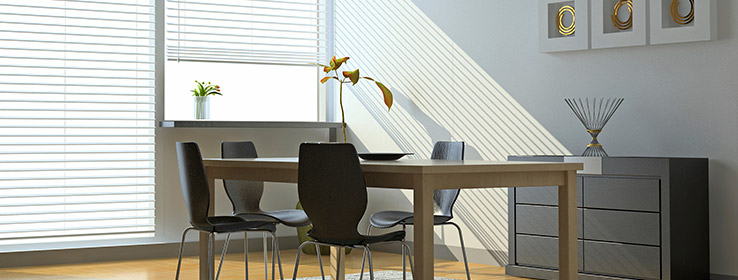Get all the angles on gloss and sheen in paint — and how both can affect everything from color to finish selection.
by Molly Burke
Pop quiz: What’s the difference between gloss and sheen? And how is each measured? If you answered both of these questions with a hesitant “I’m not sure,” don’t worry, the confusion is common.
Differentiating gloss and sheen is complicated but important, because both can have a strong impact on paint color and finish selection. So here’s what you need to shine up your knowledge and deepen your understanding of both qualities.
How gloss and sheen are measuredAcross the paint industry, gloss and sheen are measured by reflecting light off of specific angles. Gloss is measured at a 60-degree angle — meaning a beam of light is deflected from 60 degrees off a surface and back into a receptor. The receptor provides the number of gloss units, from 0 to 100. The closer to 100 units, the shinier and glossier the paint. Because gloss finishes have the highest reflective characteristics, the lighting of the room should be the biggest consideration when choosing gloss levels.
Conversely, sheen is measured at an 85-degree angle. The differences of sheen on a surface are most noticeable in low-gloss paints. Amid all of this science, it’s important to know that every Sherwin-Williams product has a gloss value, or a sheen value or some have both values. By assessing these values, you can be sure you’re using the right product and finish for your project.
How to choose the gloss or sheen levelSelecting the ideal gloss and sheen involves important visual and functional considerations, including the traffic level of the room, lighting, position of windows and performance expectations. Here are the most important points to remember:
Use a low gloss/sheen when:There’s a wall with lots of imperfections. Low gloss and sheen will hide flaws — especially in interiors.
The room has plenty of natural light. As mentioned above, gloss and light have a close relationship, so rooms with a lot of light and high-gloss paint could have excessive glare and a mirrorlike effect.
The space doesn’t need much attention, like certain ceilings or hallways
The room has lots of traffic, and therefore needs lots of cleaning. High-gloss/sheen paints traditionally produce the toughest and most stain-resistant finishes — that's why glossy finishes are common in bathrooms, high-traffic areas and kids' rooms.
The room needs some depth. Contrasting your finishes provides a feeling of depth. To achieve a 3-D feel, consider using gloss paint on the trim in a room that has otherwise been painted with a low-lustre or flat paint. Also consider using gloss finishes to help architectural features pop — such as entry doors or trim around ornate glasswork.
Even though paints with a higher gloss/sheen are generally easier to clean, interior paints with newer technology like Sherwin-Williams Emerald® Interior Acrylic Latex and Duration Home® Interior Acrylic Latex provide exceptional washability at all sheen levels.
Let Sherwin-Williams helpAlthough the industry agrees on how to measure gloss and sheen, the descriptions for finishes and gloss levels are incredibly varied among different manufacturers. For instance, one brand’s gloss could look like another brand’s semi-gloss.
Sherwin-Williams makes it easy for design pros by using standard definitions:Flat category (Flat, Matte): Paint surface that creates no to very low reflectance when dry.
Satin category (Low Gloss, Low Sheen, High Sheen, Eg-Shel, Low Lustre, Velvet): Paint surface that creates a low to medium reflectance when dry.
Semi-gloss category (Semi-gloss, Pearl, Medium Lustre): Paint surface that creates a medium to low-high reflectance when dry.
Gloss category (Gloss, High Gloss): Paint surface that creates a high reflectance when dry.
At Sherwin-Williams, we offer products for specific jobs, rather than broad formulations. Our Gloss and Sheen Guide shows the gloss and sheen range for each of Sherwin-Williams exterior and interior coatings, so you can be sure you can find a product that meets virtually any project application or performance expectation.
For more information on selecting the best paint and gloss/sheen for your next project, contact your local Sherwin-Williams Designer Account Executive or Architectural Account Executive.





